Insights into the life of a bear sanctuary CEO
by Matt Hunt, CEO of Free the Bears
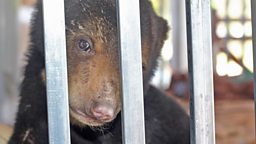
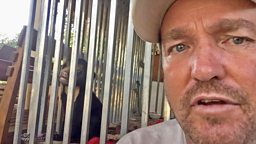
Mary鈥檚 rescue was particularly special
Mary’s rescue was particularly special as since 2003 we’d only rescued one sun bear in Laos (the majority of 80+ rescues in this country have been moon bears captured as cubs and kept as trophy pets or raised to sell to bear bile farms). As soon as we heard she'd been seized from a trader in the mountains I immediately jumped onto a night bus armed with milk formula, blankets and hot water bottles. Sun bear cubs can quickly succumb to the cold when they don’t have their mother’s warm belly to tuck into, and so it was vital that we reach Mary as quickly as possible.
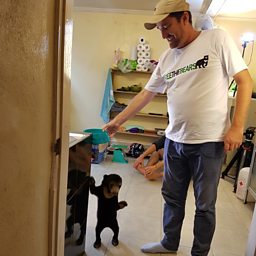
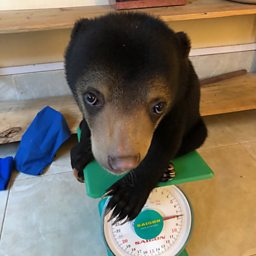
...the decision was taken to care for Mary at my home.
With our new cub nursery still only half-built, the decision was taken to care for Mary at my home. I figured she’d be with me for around 3 weeks but ultimately, she stayed for 50 days and weighed 12.5kg before we’d completed her new home. She’s thrived since, constantly digging, climbing and playing with Noy, another female sun bear who was fortuitously rescued just a few months after Mary. Having recently rescued a third female sun bear, we’ll regularly be providing updates to our social media and as we integrate her into Mary’s group and build them a new, larger enclosure.
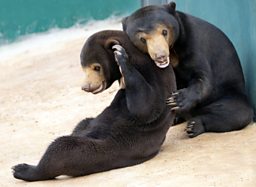
their [sun bears] curiosity, determination and intelligence make them a challenging but highly rewarding species to work with.
The arrival of Mary in December 2018 rounded off another “can’t get any crazier than this” year. I never intended to move indefinitely to South East Asia, I planned a 3-month assignment volunteering with Free the Bears which turned into fifteen years – each year getting busier as the numbers of rescued bears grew. We went from 22 sun and moon bears at our Cambodian sanctuary in 2001 to more than 230 bears across three countries (Cambodia, Laos and Vietnam) today. In our Cambodian sanctuary the bears are mostly sun bears which I always refer to as the “Jack Russell’s of the bear world” – what they lack in stature they more than make up for in personality! I find sun bears to be the most fascinating of the eight bear species; their curiosity, determination and intelligence make them a challenging but highly rewarding species to work with.
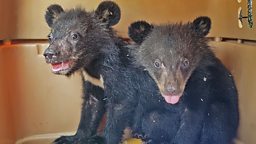
...tragically, they were stolen from us at the sanctuary.
In May 2019, we rescued two five-month old moon bear cubs, David and Jane, after they had been illegally advertised for sale online. But tragically, they were stolen from us at the sanctuary. The loss of David and Jane is the only time we’ve had cubs stolen in more than 25 years of operations. It was a low point I don’t wish to ever revisit again. Although there’s a suspicion the criminals involved were part of the illegal wildlife network from which David and Jane were originally confiscated, the local police and Department of Forest Inspection investigations are ongoing. Our experience tells us that trafficked wildlife is quickly moved across borders but not a day goes by that we don’t hope and pray we’ll receive a call about David and Jane. While we’re confident that increased security at the sanctuary will prevent anything like this happening again, this incident shows how difficult it is to combat organised crime when our own resources are always limited. We’ll continue to work with our government partners in our fight to protect and rescue bears in need and have already rescued 16 bears, including 9 cubs, since the theft in Laos alone, plus numerous rescues in Cambodia and Vietnam.

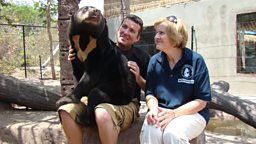
many of the moon bears we rescue have spent decades trapped in tiny metal cages
A large proportion of new rescues are cubs requiring hand-rearing, these tend to be hard work at first but soon grow into happy and healthy little bears. In Vietnam, where bear bile farming hit a peak of almost 4,500 captive animals 15 years ago, many of the moon bears we rescue have spent decades trapped in tiny metal cages, surviving on scraps of food and routinely abused in order to extract their bile. The road to rehabilitation for these Vietnamese bears is difficult, with numerous physical and psychological scars that need the attention of veterinarians and bear care specialists, often for the rest of their lives.
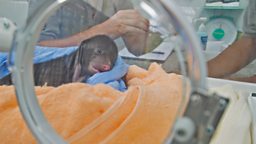
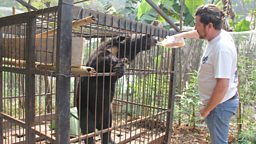
...just ten minutes spent watching the bears in our care serves as a perfect reminder of why the work we are doing is so important
While our ultimate goal remains bringing about an end to the practice of bear bile farming, the recent spate of rescues has already filled the bear houses we'd built in preparation for planned bile farm closures and the current COVID-19 pandemic has impacted plans to build more bear houses in the next year as funding sources are lost. As with Vietnam, where 400+ bears remain captive despite bear bile farming being illegal, farm closures depend on availability of rescue facilities. We hope to press forward with construction and rescues with regular updates on social media. No matter how insurmountable the challenges facing us may look at times, just ten minutes spent watching the bears in our care serves as a perfect reminder of why the work we are doing is so important, and why the battle is worth the fight.

